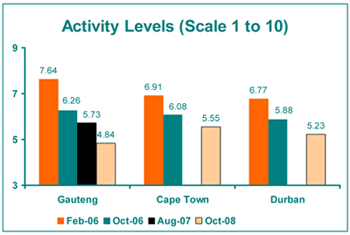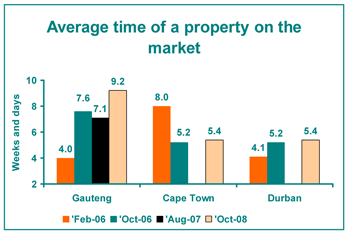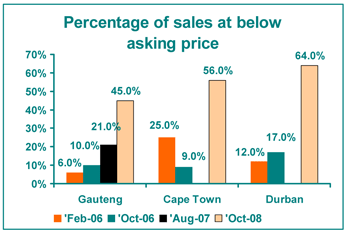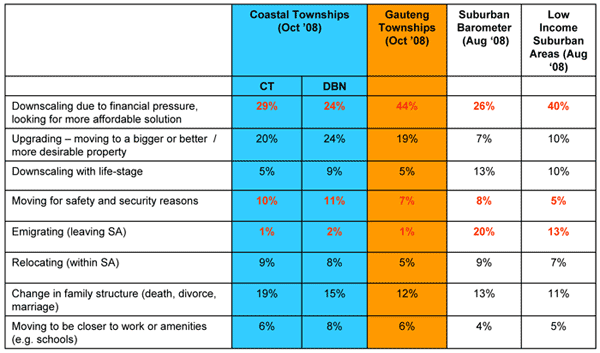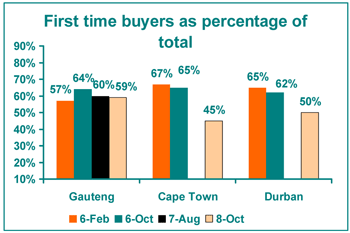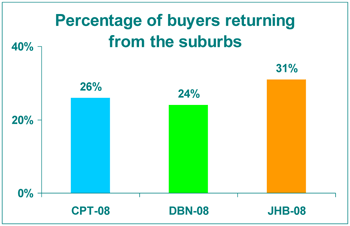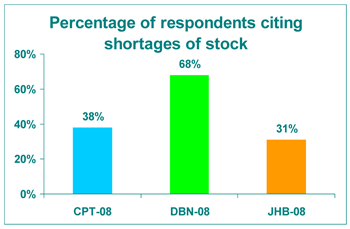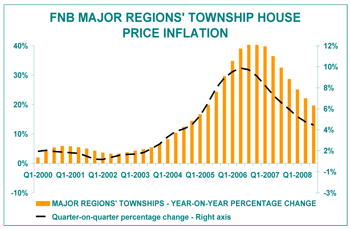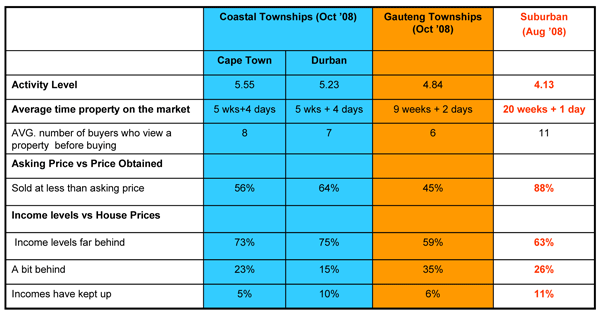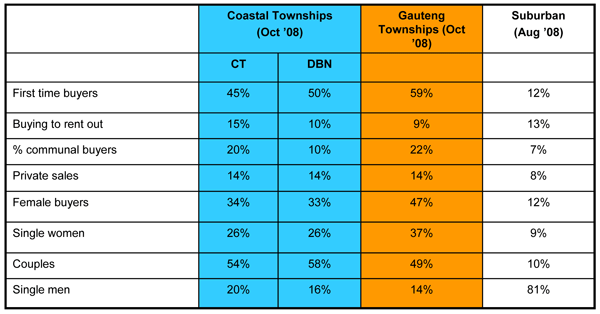|
Summary |
|
|
Demand activity levels are arguably being kept higher by a number of factors. One factor relating to the cycle is that of affordability. With financial strain having risen, agents in suburbs and townships alike estimate high percentages of sellers selling to downscale, and it is conceivable that significant numbers of suburban sellers at the lower end of those markets are downscaling back into the more affordable townships, providing some source of support for these areas. But structural changes must also play an important role. Township infrastructure, retail, entertainment and services upgrades are gradually making these areas more attractive for people with significant purchasing power to live. The fact that, in the survey, Soweto is believed to have the highest percentage of buyers being buyers from the suburbs may be reflective of these improvements, because Soweto appears to be a leader with regard to such upgrades, and its image has improved dramatically. |
|
|
Township Property Still In Much Better Shape than Its Suburban Counterpart, But the Slowdown Is In Place |
|
|
|
|
When FNB launched its October Township Property Barometer this month, an annual supplementary survey to its main quarterly Property Barometer, the results showed ongoing superiority in performance by townships over the former white suburbs, although a slowing trend is observed. |
|
|
|
The survey found that the township markets are, like their suburban counterparts, on a slowing trend, feeling the financial pinch caused by rising inflation, interest rates and a slowing economy to name the key economic factors. However, their performance remains significantly better than the suburban markets. |
|
Tell-tale indicators of a slowdown were also found in some other key survey questions, including a broad increase in the estimate of the average time that a property remains on the market until it is sold (Gauteng being the longest at 9 weeks and 2 days), as well as a significant rise in the percentage of sales being concluded at below asking price, which reflects possibly not only a weakening market but also a prevalence of unrealistic sellers. Unrealistic expectations may be especially relevant to Durban, where stock is said by agents to be in very short supply, but yet as much as 64% of sellers are being required to drop their asking price. |
|
|
|
|
|
Household financial pressure is nevertheless in evidence, and reflected in the part of the survey asking estate agents the various reasons for sellers selling. In Gauteng it is believed that as much as 44% of sellers are selling to downscale due to financial pressure, compared with a more moderate 24% and 29% for Durban and Cape Town respectively. These coastal regions percentages are similar to the national suburban market estimate of 26%, while the Gauteng market appears to be in distress comparable with the lower income segment of the suburban market (40%). |
|
|
|
|
|
|
|
In these troubled financial times, the township markets have some advantages over the suburban markets when it comes to sources of support. Having been relatively neglected infrastructure- and services-wise under the Apartheid government, and having housed the poorest population group, these markets are by-and-large the cheapest and most affordable. |
|
|
|
Since the 1990s, in a faster growing economy that has become a net job creator; disposable income growth has grown the fastest in the so-called black population group, which should not come as a surprise given this group’s entry into the economy after having been largely excluded in the Apartheid era. The strong growth in black employment numbers is probably seen in the figure for first time buyers in the townships, and with townships being the most affordable, it stands to reason that a very high proportion of total buyers in townships are believed to be first time buyers, i.e. 59% in Gauteng, 50% in Durban and 45% in Cape Town. This is compared to a mere 12% in the most recent “suburban” Barometer survey. |
|
The townships do not have the national emigration problem of the suburbs, although, interestingly, some emigration is said to exist on a small scale. Whereas 20% of sellers in the suburbs were believed to be selling to emigrate in the third quarter, only 1% to 2% of sellers were believed to be doing the same in the townships. |
|
|
|
The drivers of this return could be numerous. While cultural factors can play a role in certain cases, another driver may well be the indication that 40% of lower income sellers in the suburban markets are downscaling due to financial pressure, which could suggest that a significant amount are downscaling back into the townships. |
|
These developments are making townships into more attractive places to live, especially for middle class households who demand quality retail and entertainment. The survey shows that the township region believed to have the highest percentage of buyers being people trying to returns from the suburbs is Soweto (38%), which may be coinciding with the rapid pace of retail developments and upgrades in this region. |
|
|
|
|
Finally, superior township property performance is not all about demand levels, and admittedly the township demand activity ratings don’t exceed the suburbs by a huge margin. It is also about supply constraints, and with townships traditionally being less traded areas due to lower mobility of low income people, many estate agents surveyed do indeed indicate a shortage of stock relative to demand, particularly in Durban. In Gauteng, 31% of respondents report a shortage of stock relative to demand, 38% in Cape Town, and a massive 68% in Durban. |
|
|
|
|
|
|
|
|
|
|
|
|
|
*Townships – the term used to describe residential areas formerly limited to the so-called black population group during the Apartheid era |
|
Property Advice
